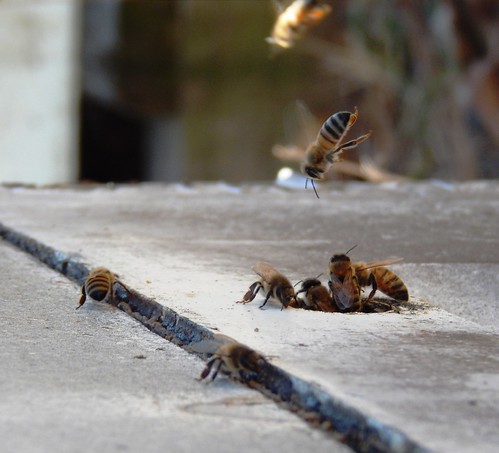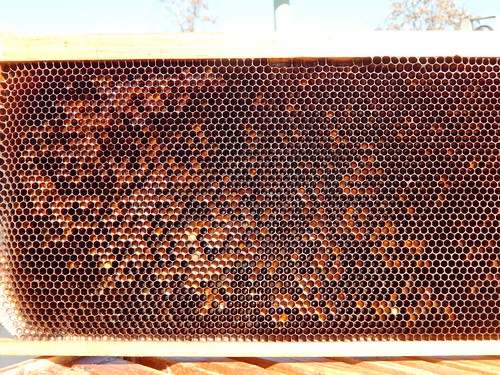
Honeybees leaving and returning to the hive after collecting pollen. Photo: Ashton Ebarb.
“They’re in a happy mood today,” Jim Pratt, a local apiarist, said.
At a comfortable 62 degrees, honeybees buzz with a clear objective: collect nectar and pollen, for honey and pollination.
“Pollinators, like honeybees, support food crops,” Pratt said, explaining why for 20 years he’s raised honeybees.
Pratt’s Farm annually produces about 120 pounds of honey per colony. He maintains 100 colonies, collecting honey from them each spring, summer and fall. During the winter, the bees eat stored honey until warmer weather arrives.
Honeybees, like all pollinators, face challenges. Lack of habitat is the number one local threat Pratt sees to pollinators.
USDA’s Natural Resources Conservation Service (NRCS) works with farmers, ranchers and forest landowners to implement conservation practices on the ground that have numerous environmental benefits, including ones that provide habitat and food for pollinators.
“Much of our local land is managed pastures,” Pratt said. Pastures provide benefits in various forms of agriculture, yet there are times between seasons when nothing is grown to attract pollinators across vast measures of land.
“As a beekeeper, I seek out managed pastures over-seeded with clover. Placing colonies of honeybees in and around the pastures benefits not only the beekeeper with the potential of premium grade honey, but also benefits the landowner by sustaining the clover population as a result of the necessary pollination by the bees.”
With NRCS’ Environmental Quality Incentives Program (EQIP), landowners can offset the cost of over-seeding clovers in their pastures and adjacent tracts specifically for pollinator species.
“Pastures over-seeded with clover provide benefits in various forms of agriculture,” Pratt explained. “First, pollinators of all types are attracted to it. Second, clover replenishes nitrogen in the soil which better supports livestock forage.”
Since clovers are a cool-season legume, and usually die-back with the onset of mid-Summer, Pratt looks for tracts of land with natural habitat, such as wildlife refuges, conservation reserves and pollinator plantings adjacent to the pastures for nectar and pollen sources after the clover has died.
Pollinators need nearby habitats which is vital to sustaining their populations. People need pollinators, too. No matter the pollinator, whether bee, bird, beetle, butterfly, bat or any other, all contribute to our food supply by pollination.
“90 percent of fruits and vegetables are not self-pollinating,” said Janice Hutton, horticulturalist with The Sabine River Authority in Sabine Parish, Louisiana.
Fruits and vegetables almost entirely depend upon pollinators. Every living person and thing that depends on fruits and vegetables depends on pollinators too.
The good news: helping pollinators achieve their goal is as simple as growing certain plants.
“I have to know what blooms, when it blooms and whether each colony has enough worker bees to collect nectar and pollen,” said Pratt.
This week, USDA is celebrating National Pollinator Week by highlighting the many ways in which conservation benefits pollinators.
Through the 2014 Farm Bill, landowners have an opportunity to receive financial assistance through conservation programs and practices, which includes planting cover crops to target these beneficial pollinators.

Honey comb from the hive. Photo: Ashton Ebarb.
No comments:
Post a Comment
Note: Only a member of this blog may post a comment.